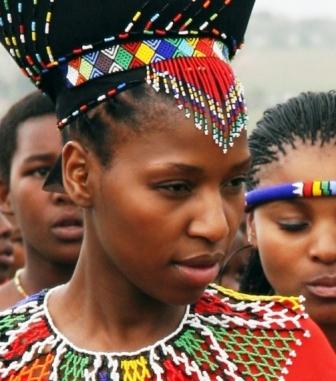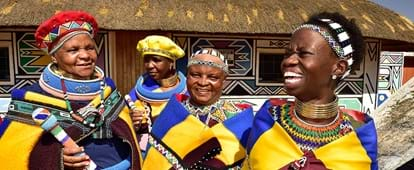Indicators on South African Culture Today You Need To Know
Indicators on South African Culture Today You Need To Know
Blog Article
Excitement About South African Culture Today
Table of ContentsSouth African Culture Today Fundamentals ExplainedGetting The South African Culture Today To WorkThe Best Guide To South African Culture TodayTop Guidelines Of South African Culture TodayNot known Details About South African Culture Today The 6-Second Trick For South African Culture Today
An issue of value in Zambian towns is the passing away of liked ones. All members of the village put cash, time and initiative with each other for the interment of the deceased.During the mourning period; guys stay outside your home and the women stay inside the residence of the deceased. After speaking about the dead, the town walks to the location of burial to say their last goodbyes. Songs and dancing is an extremely crucial element of the Zambian culture. The various tribal systems have their own dance kinds; nonetheless, makishi is typical amongst all people.
The Greatest Guide To South African Culture Today
When it concerns songs, drums are made use of one of the most, with a variety of drumming events. In Zambia, majority of individuals are Christian; Protestant and Roman Catholic. There are little teams of Muslims and Hindus, with the rest adhering to regional native tribal ideas.

South African heritage and culture is greatly varied, and is composed of lots of different groups of individuals that each have their own traditions and ideas. Having such a variety of people and cultures is what makes South Africa so distinct. In real sense of the expression, we are a rainbow country.
South Africa has roughly three hundred thousand Portuguese individuals staying in it. Making it the 7th on the listing of countries with one of the most Portuguese people in it beyond Portugal. Portuguese is not only a society, however it is likewise a language and a citizenship. Portuguese people originate from the nation of Portugal in Europe, however, as a result of Portugal (like several various other countries in Europe) discovering the world and overcoming other countries during the 15th 20th centuries, South Africa has what we call Portuguese South African's living in it.
The Main Principles Of South African Culture Today
Amongst the popular functions of the topography is a plateau that covers virtually 2 thirds of the facility of the nation. The plateau complex increases toward the southeast, where it climaxes in the Drakensberg variety, component of a cliff that divides the plateau from the seaside areas. The Drakensburg consists of Champagne Castle, the highest possible peak in the country.
The area north of the Witwatersrand, called the bushveld, slopes downward from eastern to west towards the Limpopo River, which forms the international border. The western section of the plateau, the middleveld, also comes down towards the west and varies in elevation between the highveld and bushveld. Between the Drakensburg and the eastern and southerly coast, the land descends to the sea.
Nearer the coastline there is a low-lying level called the eastern lowveld. Southwest of the plateau the country ends up being progressively much more arid, giving way to the hostile desert of the Great Karroo, verged on the east by the reduced, much better watered plateau of the Little Karroo. Separating the dry southerly interior from the sandy littoral of the southern shore and West Cape is another range, the Langeberg.
Getting The South African Culture Today To Work
The country's racially, ethnically, and politically separated history has generated nationwide and subnational signs that still function as signs of the country, and others symbols that are accepted just by certain teams. The monuments to white settler conquest and political supremacy, such as the Afrikaner Voortrekker ("pioneer") Monolith in Pretoria and the Rhodes Monument recognizing the British colonial empire contractor and Cape head of state Cecil Rhodes, stay sectarian signs.
The very first contemporary residents were the San ("bushman") hunter-gatherers and the Khoi ("Hottentot") individuals, who herded animals (South African culture today). The San may have been existing for thousands of years and left proof of their visibility in countless ancient cavern paints ("rock art"). Bantu-speaking clans that were the ancestors of the Nguni (today's amaZulu, amaXhosa, amaSwazi, and vaTsonga individuals) and Tswana-Sotho language groups (today's Batswana and Southern and Northern Basotho) moved down from east Africa as very early as the fifteenth century

Both previous republics of the Orange Free State and Transvaal (South African Republic) were developed by Afrikaner inhabitants that defeated and dispossessed the Basotho and Batswana. Lesotho would have been by force included right into the Orange Free State without great site the expansion of British protection in 1869. The supreme unification of the country arised from the South African Battle (18991902) in between the British and both Afrikaner republics, which minimized the nation to wreck at the start of the twentieth century.
Afrikaners historically considered themselves the only real South Africans and, while providing complete citizenship to all residents of European descent, denied that status to individuals of shade till the democratic transition of 1994. British South Africans keep a sense of cultural and social link to Great Britain without weakening their identification as South Africans.
9 Simple Techniques For South African Culture Today
The variety and fragmentation within ethnic collections and the equilibrium of stress in between those groups throughout the twentieth century prevented interethnic civil problem. While intergroup tensions over sources, entitlements, and political dominance continue to be, those disputes are as most likely to pit Zulu versus Zulu as Zulu versus Xhosa or African against Afrikaner.
From colonial India, British vendors and managers brought the bent metal ornamental roofings and slender lace job columns that still represent the terraces of cottages in communities and cities throughout the country. Holy places contribute a vital architectural facet hop over to these guys even in the tiniest towns. Along with the soaring steeples and timeless stonework of Afrikaans Dutch Reformed churches, Anglican churches, synagogues, mosques, and Hindu shrines give range to the spiritual architectural scene.

Butchering and the brewing of standard grain beer are crucial in securing the involvement and goodwill of the ancestors who are thought about the guardians of great ton of money, success, and wellness. Indian communities keep their native cooking practices and use them on Islamic and Hindu routine and ceremonial celebrations. Afrikaners and Coloured individuals gather at weekend directory breaks and special celebrations at multifamily barbecues called braais, where neighborhood bonds are enhanced.
Since this was the primary financial enterprise of both black Africans and white homesteaders, dispute between those groups fixated the belongings of grazing land and livestock. In 1867, the largest ruby down payments worldwide were found at Kimberley in the west central location. The wealth from those fields aided fund the exploitation of the biggest gold reef on the planet, which was uncovered on the Witwatersrand in 1886.
Some Known Facts About South African Culture Today.
This brought about misconceptions and intentional misrepresentation in the ventures of white settlers and government authorities with African chiefs throughout the colonial period (South African culture today). In the facility of African books, some facets of common and primarily "tribal trust" land period were preserved, and even in white country locations, types of public tenure were still exercised in locations with African areas
After the democratic makeover of 1994, programs for land restitution, redistribution, and reform were instituted, yet progress has been slow-moving. The white minority still regulates eighty percent of the land. In the wake of agricultural land intrusions in Zimbabwe, the Department of Land Affairs has actually vowed to speed land redistribution.
Report this page